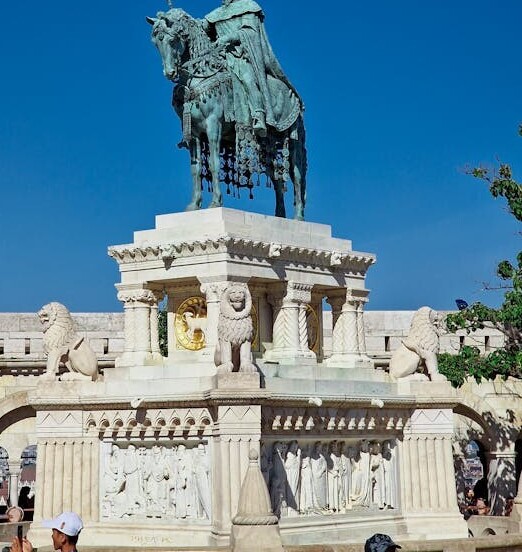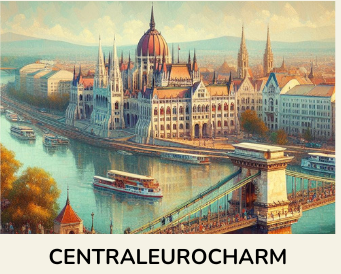Explore Hungary’s fascinating history, from the Magyars’ arrival to the 1956 Revolution and beyond. Learn how Hungary’s resilience shaped Central Europe.
The Arrival of the Magyars and the Birth of Hungary
Before the Magyars arrived, parts of present-day Hungary were under Roman rule, known as Pannonia, a strategically vital area that was already an important trading hub between East and West. The Romans built cities like Aquincum (modern-day Budapest) and developed infrastructure that would later influence Hungarian settlements.
The Magyars, a nomadic people from the Ural region, arrived in the Carpathian Basin around 895 AD under the leadership of Arpád. They swiftly established dominance over the region, integrating with local populations.
Arpád’s descendants ruled Hungary for centuries. One of the most significant rulers was King Stephen I, crowned in 1000 AD. He converted Hungary to Christianity and solidified ties with Western Europe, establishing a strong, centralized kingdom. Today, St. Stephen remains a national symbol of Hungarian unity and faith.
King Matthias and Hungary’s Golden Age

King Matthias I of Hungary (r. 1458–1490), also known as Matthias Corvinus, was from a powerful, noble Hunyadi family. He expanded Hungary’s influence by defeating the Holy Roman Emperor Frederick III and leading successful campaigns against the Ottomans and Bohemians. His renowned Black Army, one of Europe’s first professional standing armies, secured Hungary’s borders and maintained internal stability. Domestically, Matthias centralized power, curbed the nobility’s influence, and improved the judicial system, earning him a reputation as a fair and just ruler.
Beyond his military and political successes, as a Renaissance ruler, Matthias was a great patron of the arts and learning. He established the Bibliotheca Corviniana, one of Europe’s largest Renaissance libraries, and invited Italian scholars to Hungary, fostering humanist ideals. Despite his strength as a ruler, his failure to secure a legitimate heir led to instability after his death in 1490. His reign is remembered as a Golden Age of Hungarian history, and his legendary reputation as “Matthias the Just” persists in Hungarian folklore.
Ottoman and Habsburg Rule: A Divided Kingdom
The Ottoman era in Hungary began in 1541 when Sultan Suleiman the Magnificent captured Buda, dividing the kingdom into three parts: the central region under direct Ottoman rule, the Habsburg-controlled north and west, and the semi-independent Principality of Transylvania. For over 150 years, Hungary was a battleground between the Ottomans and the Habsburgs, with frequent wars and shifting borders. Ottoman rule brought cultural and architectural influences, including mosques and baths, but also economic decline and depopulation due to constant warfare. The Habsburg-led forces gradually reconquered Hungary, culminating in the liberation of Buda in 1686 and the Treaty of Karlowitz in 1699, which officially ended Ottoman rule and integrated Hungary into the Habsburg Monarchy, starting a period marked by repression and centralization.
Revolution of 1848: Hungary’s Fight for Freedom
The Hungarian Revolution of 1848 was part of a wave of uprisings across Europe, driven by demands for national independence, civil rights, and constitutional government. Hungarians, led by figures like Lajos Kossuth, poet Sándor Petőfi, and statesman Ferenc Deák, pushed for autonomy from Habsburg rule. On March 15, 1848, Petőfi recited his National Song in Pest, rallying the people to demand reform. The revolution forced the Habsburgs to accept the April Laws, granting Hungary significant self-governance. However, tensions quickly escalated as the Habsburgs sought to suppress the movement, leading to armed conflict between Hungarian revolutionaries and imperial forces.
By 1849, Hungary had declared full independence, with Lajos Kossuth as governor-president and Lajos Batthyány as the first prime minister. However, the Habsburgs, with military assistance from Russia, crushed the revolution by August 1849. Batthyány was executed, and many leaders, including Kossuth, fled into exile. Emperor Franz Joseph I, aimed to strengthen Habsburg control over Hungary by promoting the German language and culture in administration, education, and public life sparking even more resistance among Hungarians . Ferenc Deák, taking a more diplomatic approach, became a key figure in negotiating the Austro-Hungarian Compromise of 1867. Alongside Gyula Andrássy, Deák helped secure Hungary’s Dual Monarchy (1867–1918) Status, which granted greater political autonomy, rapid industrialization, economic growth, and the development of infrastructure, making Budapest a major European center while preserving its national identity within the empire.
Trianon Treaty: A Nation Reshaped
The Austro-Hungarian Empire collapsed in 1918 as a result of its defeat in World War I. As the war neared its end, various nationalities—Czechs, Slovaks, Poles, South Slavs, and others—declared independence, breaking away from Habsburg rule. Austria and Hungary became separate republics, while new nations such as Czechoslovakia and the Kingdom of Serbs, Croats, and Slovenes emerged, permanently reshaping Central Europe’s political landscape. Signed on June 4, 1920, the Treaty of Trianon was a post-World War I peace agreement that drastically reduced Hungary’s territory and population. As part of the defeated Austro-Hungarian Empire, Hungary lost over two-thirds of its land and more than half of its population, with large Hungarian communities placed under foreign rule in Romania, Czechoslovakia, Yugoslavia, and Austria. Considered a national tragedy, the treaty imposed severe military restrictions and economic hardships, fueling deep resentment and nationalist tensions in Hungary.
From Soviet Rule to Democracy
During WWII, Hungary joined the Axis Powers in 1940, seeking to regain lost territories, and participated in military campaigns alongside Nazi Germany, but later attempted to negotiate a separate peace with the Allies. In response, Germany occupied Hungary in 1944, installing a fascist regime that deported over 400,000 Hungarian Jews, and after the brutal Siege of Budapest (1945), Soviet forces took control, leading to decades of communist rule. The Hungarian Revolution of 1956, led by students and intellectuals, was a bold attempt to break free from Soviet influence. However, the uprising was brutally suppressed by Soviet forces.
In 1989, Hungary transitioned from communism to democracy, becoming the first Eastern Bloc country to open its borders, dismantle its one-party system, and hold free elections, marking the end of Soviet influence and the beginning of a multi-party democracy. This led to Hungary’s integration into Western institutions, including NATO in 1999 and the European Union in 2004.
Conclusion
Hungary’s history is a story of resilience, cultural pride, and determination. From the days of the Magyars to its role in the European Union, Hungary has continuously shaped and been shaped by the forces of history. Whether exploring medieval castles, revolutionary monuments, or modern-day Budapest, visitors can see history come alive at every turn.
Which part of Hungary’s history fascinates you the most? Share your thoughts below!
